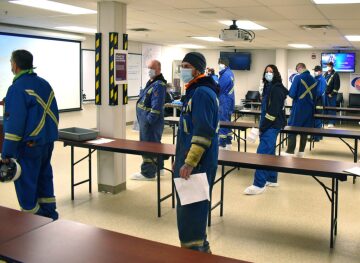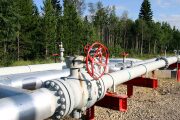When times get tough in the oil business, experienced hands reassure newcomers it is the nature of a cyclic business. They’ve been here before and hung on until the next upturn.
Not everybody agrees, this time around.
“I think anybody who said we have been through this before, I would love to ask them what data point they are referring to. There is nothing quite like this experience,” said Mark Scholz, president of the Canadian Association of Drilling Contractors.
The third oil price crash in 12 years has hit harder and faster than past price crashes, threatening lives, jobs, and profits in ways that are changing the shape of what is considered possible in Canada and the world.
Search for online stories about the Canadian oil business over the past 2 months, and the word “unprecedented” shows up again and again.
“The number of times I have used the word ‘unprecedented’ in the last month is unprecedented in itself,” said Thomas Liles, Rystad Energy senior analyst (who, after our interview, avoided using the word again in a written report).
What is most unprecedented in this downturn is that the social distancing required to slow the spread of COVID-19 is a driving force in the collapse of demand.
Canadian exploration and production spending is expected to fall by 41% this year, easily exceeding the downturns in 2009 and 2015, according to a Rystad report.
The firm expects less than $21 billion in spending, a level last seen in 2000, in the early days of oil sand development, which now is the country’s dominant sector.
“The active rig count today is 29. To give you an idea of that, you have to go back to before 1970,” to see it that low, Scholz said. Two weeks later the Canadian Association of Oilwell Drilling Contractors’ (CAODC) drilling rig count hit 24—decreased to half of the 2019 count—at a time when oil prices were depressed even when compared to the low levels that have been the norm in recent years.
While the annual spring thaw of snow and the resulting sloppy, slushy ground restricts the number of rigs working, this year Scholz said demand “completely evaporated.”
The speed and the depth of the job cuts have also been unprecedented in Alberta, the heart of the western Canada oil business.
“Alberta is on track to hit a staggering 25% unemployment rate as businesses continue to shed jobs due to the impact of the COVID-19 pandemic coupled with historically low oil prices,” said Jason Kenney, the premier of Alberta.
Kenny made the prediction at a conference in March when the province’s jobless total was less than 8%. If that prediction proves to be true, it would be the highest ever for a Canadian province.
Every producing country is scrambling to adapt to a demand drop that could be as high as 30 million B/D globally, but it is difficult to be certain of the ddrop now or by year’s end.
Multiple estimates from oil, pipeline, and financial sources put the production drop in Canada at 1 million B/D or more, which far exceeds the announced cuts.
Prices so low that every barrel sold adds to the losses are driving unprecedented production reductions. Some locations had to slow because of outbreaks of COVID-19.
Two major offshore projects to expand production off Canada’s east coast have been delayed. Husky Energy stopped construction at the White Rose field expansion because of coronavirus infections. An upgrade of the FPSO on the Terra Nova could not begin because the production vessel could not be moved into a dry dock in Spain. Some other locations have shifted to minimal staff due to an outbreak.
By the end of this year, Liles said the Canadian cuts could be reduced to 400,000 B/D in the fourth quarter, but that comes with a qualification: current and future estimates of oil demand are far from certain.
“There has been unprecedented uncertainty and disruption due to the COVID-19 pandemic,” said Steve MacDonald, chief executive officer for Emissions Reduction Alberta, adding, “That is the cold hard reality in this.”

Trauma Care
Based on years of experience. Canadian oil producers have mastered the art of delivering soothing explanations for how they are adapting to bad business conditions. A spate of releases in mid-March described strategies designed to maximize health, safety, operational flexibility, and bolster strong balance sheets.
Early cuts were made in high-cost conventional heavy-oil operations and oil from shale plays.
Oil sands can profitability produce a barrel of oil for less than the most efficient shale oil producer. With the price rising in late April to around USD 23/bbl for Western Canadian Select, it is getting close to the level where the most efficient Canadian producers can make money.
Suncor said it could turn an operating profit on its oil sands operation when selling it for USD 17–18.75/bbl. Maintaining the ongoing operations, though, is relatively cheap. Cenovus put its annual cost of maintaining operations at USD 2.60/bbl.
Based on analysts’ estimates, the handful of big oil sands producers are running at about 25% below capacity. Future production will depend on demand—storage limits mean production will not rise until they can find a refinery to buy it. Also cost and complications associated with changing the output from complex operations limits output adjustments.
Cutting money-losing production will slowly work off the excess supply that is testing the limits of oil storage, allowing prices to recover in the future, but there is related fallout for those in the oilfield services.
Canadian drillers have been struggling for years as low oil and gas prices and competition from fast-growing US shale oil production put a tight lid on drilling demand.
“We have been drug though the mud with completely unsustainable margins for the past 5 years,” said Scholz while explaining the need for government aid to limit further damage in the service sector. Since 2014, CAODC said Canada has lost 22 companies, 600 rigs, and 90,000 jobs that are directly or indirectly related to drilling.
One upside of the crash: It has spurred Canadian government officials to look for ways to aid drillers.
It is a tricky problem. The only way to reduce the glut of oil at a time when storage is running out is to cut drilling and production, which is poison for those drilling new wells and maintaining old ones. An added complication is the large bloc of Canadian voters focused on global warming and who want government money spent on emissions reductions instead of life support for the oil industry.
To address that dilemma, the Canadian government created a pair of programs that are expected to put thousands of service company employees to work on abandoned well cleanups and methane reduction.
It offered $1.2 billion for the decommissioning of abandoned wells and cleanup of the sites of orphan wells in four western provinces. Another program offers $750 million to reduce methane leaks—an even more potent source of warming than carbon dioxide.
While Scholz saw it as a positive providing work for service rigs at a time of falling demand for well workovers, he said an injection of cash is still required. The industry is pushing for a government plan to purchase accounts receivable at a discount from service companies. This would provide cash to service companies. The government hopes to cover its outlay by recovering the payments if market conditions improve.
Short-term programs to aid service companies reduce the economic impact of lost jobs; longer term it may preserve skills and knowledge that have made the Canadian business competitive and innovative.
“It takes a long buildup of workforce with competent people,” Scholz said. Those people could be lost in a prolonged downturn without government support to prevent a mass extinction of service companies.
Staying Power?
Going into this year, Canadian drillers were expecting some improvement from the depressed levels since 2014.
The US shale boom that Texans hailed as a miracle has been a curse in the oil fields of Alberta and Saskatchewan. Canada’s rich tight-oil and gas basins were crowded out of the US market by production in plays near major markets such as the Permian and Marcellus.
Oil sands producers had geared up to service US refineries that had spent billions on equipment to turn heavy crude into more-valuable fuels. However, the producers were limited by pipelines unable to transport all the production—forcing them to ship crude to US Gulf Coast refiners using high-cost rail cars at a time when rising shale production was holding down benchmark prices and adding to the downward pressure on heavy oil
“The oil sands have been in a fighting-for-survival mode since 2015, for a lot of them,” said Scott Norlin, a research associate at Wood Mackenzie who follows Canadian exploration and production.
During those years they have been cutting “bloated” costs, paying down debt, and consolidating. International oil companies sold out, allowing a handful of Canadian companies to buy up 92% of the production capacity, he said.
And three pipeline projects that have been in the works for years, may finally get built, creating a growth opportunity by adding 1.5 million B/D of export capacity.
Last year the federal government bought the Trans Mountain Pipeline project which had been stymied by environmental opposition; the government is now backing construction of a second line along the route that will allow tanker exports for the first time.
Recently the Province of Alberta revived the Keystone XL Pipeline project by investing $1.5 billion and guaranteeing $6 billion in loans to finance construction by TC Energy for its US leg to the Gulf Coast.
Enbridge is working on an expansion along a route to major northern US states at a time when production is so much that the company has stopped rationing its pipeline space for heavy crude and when oil sands operators have also stopped shipping by rail.
Opposition to pipelines is still strong, so timelines may be extended. But three projects are in progress which could add more than 1.5 million B/D of capacity. Heavy-oil supplies from Venezuela have dried up because of US economic sanctions, among other problems, and Mexico's heavy-oil exports are declining.
Norlin said, “I do think potentially we could be long pipe by 2023. That would be a total change from our current point of view.”
Smaller independent Canadian producers are more vulnerable to a lasting price squeeze. But they have spent years adapting to a low-price market.
Operators working in those fast-declining plays were quick to back off drilling for oil and money-losing prices as were operators producing heavy oil from conventional wells. A sizable majority of those still drilling are shifting to natural gas at a time when its low price offers some chance to make money compared to oil.
The number of wells in involved is small, and the available gas reserves in North America are vast. Still, another unexpected change.
“They are avoiding the liquids-rich areas,” Norlin said. Any drilling rig working in Canada is likely to be drilling for gas, which is selling for a price that is rising. He said “If you asked me if gas would be the primary target ...”




